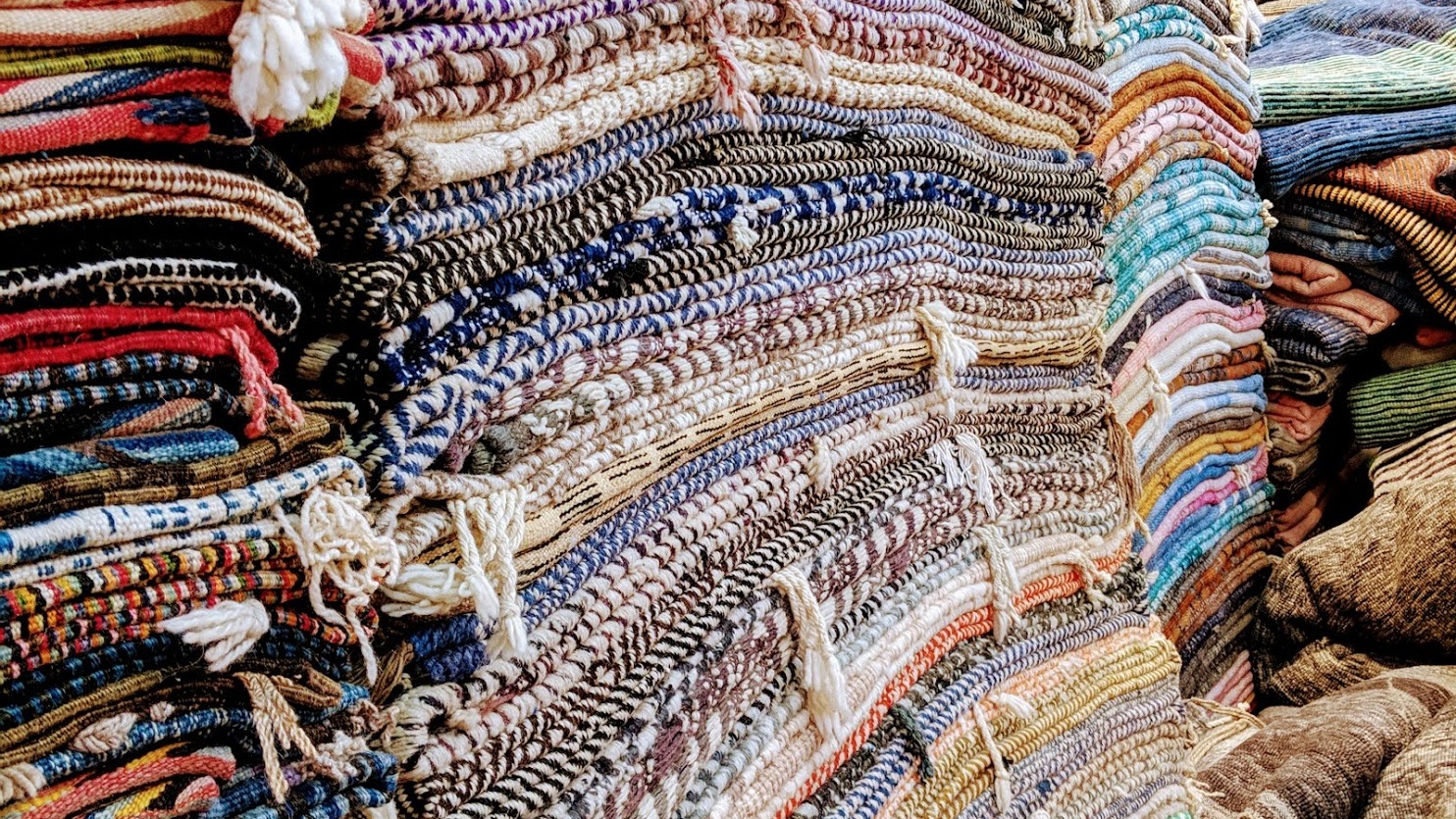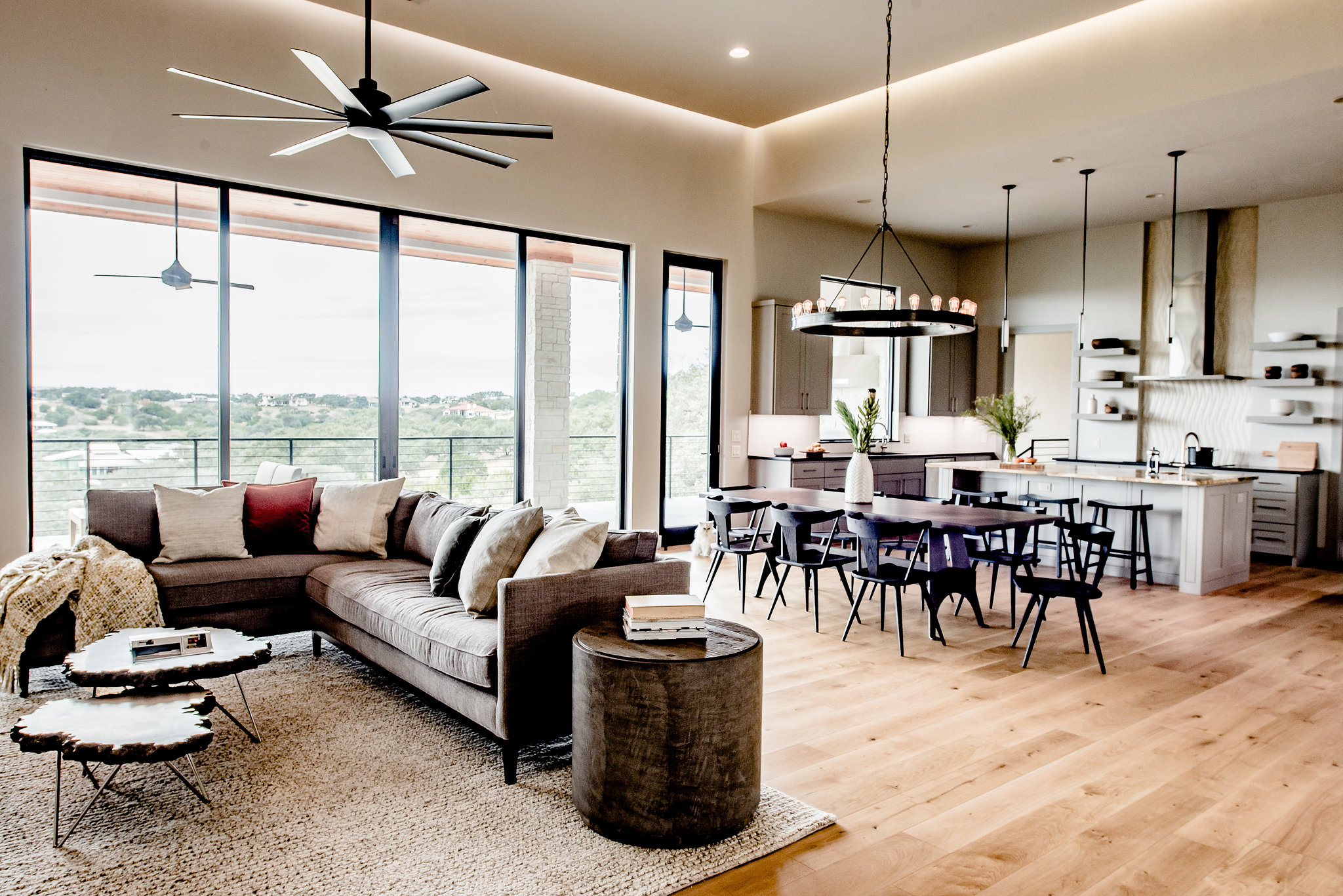Photo taken by Casey on a visit to Morocco - what heaven for a rug-obsessed interior designer!
Thank you for joining us for our last installment of All About Rugs. Below is one more guest post written for our blog by Casey Cunningham, a rug enthusiast and Laura Burton Interiors designer.
All individual rugs pictured are available at Black Sheep Unique, our favorite rug showroom. All photos of spaces are rights of Laura Burton Interiors. ENJOY!
Written by Casey Cunningham in collaboration with Laura Burton.
Welcome back to the third and final installment of “Blah blah blah …… RUGS!”. For those of you who have stuck this out with me you are in for a treat. It’s time for the juicy stuff – Styles and Trends!
PART THREE – STYLES AND TRENDS
When you hear the word “rug” what do you picture?
Grandma’s antique Oriental rug under the dining table at Thanksgiving? I feel like that’s what a lot of people picture when they hear the word “rug” (even if their Grandma didn’t have that rug). But the word can mean a lot of things and there are even subcategories within categories. The following are a few different types of rugs you might consider for your space. Think of these as more general “looks” than technical categories. This is not an exhaustive list, but a mere sampling.
FLATWEAVES
One of my personal favs for a cost effective, somewhat rustic, casual but still classy vibe. They come from all over the world and each region has a different style.
Generally speaking, they can be southwest (American Indian – commonly known as Navajo rugs), Oaxacan (Zapotec), Turkish (Kilim) and Moroccan (Berber) – to name a few. They can be brightly colored to more neutral depending on the natural dyes in the region. These days, with companies like West Elm and CB2 creating their own designs, they can have a contemporary or retro vibe.
These are rugs woven on a loom. They aren’t knotted so there’s no pile. They are lightweight and easily foldable. Pros: They are more cost effective, don’t really shed, and look great in a lot of different environments, especially if you love a more casual look. Cons: Not particularly soft or cushy, can be a little scratchy on bare feet
ANTIQUE / VINTAGE / TRADITIONAL
I kind of hate lumping all of this together, but I also understand that you are grown adults with lives to live and know how Google works if you want to further your rug education.
So think of this (traditional) as more of a general “look” in a space. From a faded Oushak to a geometric Heriz (Grandma’s Oriental rug could also fall into this category.) These types of rugs will often have some kind of center medallion, be generally symmetrical and have some kind of border framing the rug.
Depending on the color scheme, these can be very versatile. They can blend with traditional furniture or compliment more contemporary furniture. These are fun when you enjoy layering patterns. When you get bored with one accent color, you can always just play up a different color in the rug. Pros: Transitional look / style versatility, many colors to choose from to accent. Cons: Pricier, can shed more than flatweaves.
NEUTRAL/NATURAL RUG LOOK
This look can come from an undyed, chunky knotted wool or natural fiber rug (like sisal / jute) or more transitional, patterned wool rug with a neutral palette. Maybe you want a calming vibe. Maybe you want your wall art to take centerstage. Maybe you’re working with a primarily neutral palette for the room and would rather focus on texture to create visual interest. Maybe you like to change things up with every season and this allows you to go wild with red heart streamers, orange cornucopia baskets AND pastel Easter Bunnies all in the same space throughout the year. Pros: Can be more cost effective, design flexibility. Cons: You risk being *too* vanilla if you don’t accessorize properly and you wake up in the middle of the night in cold sweats after the reoccurring nightmare of your child smearing green Jello in one hand a creating a marker masterpiece in the other. (aka: colorful stains)
CONTEMPORARY LOOK
This is where abstract and geometric shapes can cohabitate with asymmetry and all over pattern (sans border). It can be literally solid color nothingness, a color block pattern, a small, repeating geometric or an organic, all-over Rorschach test. But it will likely be paired with its fair share of clean lines in the furniture and maybe a little metal in the accents. You might see more silk or viscose in these styles (if you’re looking for something a bit fancier). This is where you’ll see cut pile options (varying heights of pile to create a 2-D look). Pros: They are a great way to incorporate color or drama via the rug. Cons: Less versatile when a color or style change is desired down the road.
LONG PILE
Again, it’s not exactly fair to lump Moroccan rugs in with shags, but they all feel good to sit on. These will be plush, comfy and often pretty affordable. Balance that with how comfortable you are with crumbs getting buried in the fibers.
Moroccans will often be associated with a more ‘Boho chic’ look where as a shag is definitely more retro or occasionally ‘glamy’, depending on the materials. Shags had a moment a few years back, and also in the 60/70’s. Moroccan rugs have a bit of a rep as a “starter rug” as they have been so widely adopted by vendors who court 20-30 something shoppers with a nice apartment and their first “real” job. However there are some really cool things happening with Moroccan rug design that I got to experience first hand on my recent work abroad trip. Pros: Cost effective and super cozy and soft on the feet. Cons: Cleaning and crumbs can be a challenge.
THE WILD CARDS
These are those rugs on the fringe (no pun intended!) of the industry. They are niche products. You have hot pink hair on hide, woven leather, organically shaped, glow in the dark… If you want to get weird with it – there is a rug for that!
TRENDS:
· Color and bold pattern.
· Recent technology has made it easier to replicate more organic designs. You’re seeing more stuff that looks almost like an actual painting than a hand drawn geometric pattern.
· Layering rugs.
· Traditional patterns with updated color palettes.
· More decorative shapes than just rectangles and circles.
Prediction: Oriental rugs will make a comeback
EXTRA TIDBIT - RUG DESIGNERS I STALK ON IG:
· Wool and Silk Rugs
· Rug Star Official
· Soufiane Zarib
All are available at Black Sheep Unique through your friendly neighborhood interior designer (they are a trade only showroom). Special thanks to Black Sheep for letting me consult on a couple of questions, and generally hang out in your showroom while lovingly caressing all of your beautiful rugs.
Speaking of getting weird….thank you for coming along with me on this rug journey!



























